The jasmine flower meaning relates to the moon and is a perfect flower for the cancer zodiac sign.
The jasmine flower was first introduced into Europe through Spain. They bought it from the East Indies in 1560.
Most of the species of the jasmine flower are native to the tropics and subtropics.
In this blog we will explore the myths and beliefs surrounding the jasmine flower and how they have different meanings.
We will also explore its various uses and how different types of jasmines are used for various things.
What does jasmine flower mean?
The white jasmine flower is a symbol of grace, amiability and also elegance. It is often used as an emblem of the Virgin Mary. Yellow Jasmine flower is also called the flower of the epiphany, when you dream of this flower it is a bearer of good luck. If lovers dream of the jasmine flower then it is a sure sign that they will be married very soon.
Cancer Birth Flower
According to alchemy the jasmine flower falls under the dominion of the moon. It makes a great gift as a cancer birth flower.
The moon is the ruler of the Cancer Zodiac. The qualities of the moon is feminine, changeable, motherly, familiar. The moon also has mixed trait like bright and dark.
On one hand, the moon is metaphor for benevolence and motherliness, while the other side represents raw instincts and wilderness.
To further emphasise the this link to the moon in ancient India there are several accounts where the gods and goddesses are described as white as the Jasmine which reminds them of the moon.
Another link in ancient India several poets associates the jasmine flower meaning by describing it as the Moonlight of the Grove.
And finally, in witchcraft the jasmine flower is often used in several spells where the qualities of the moon have to be amplified.
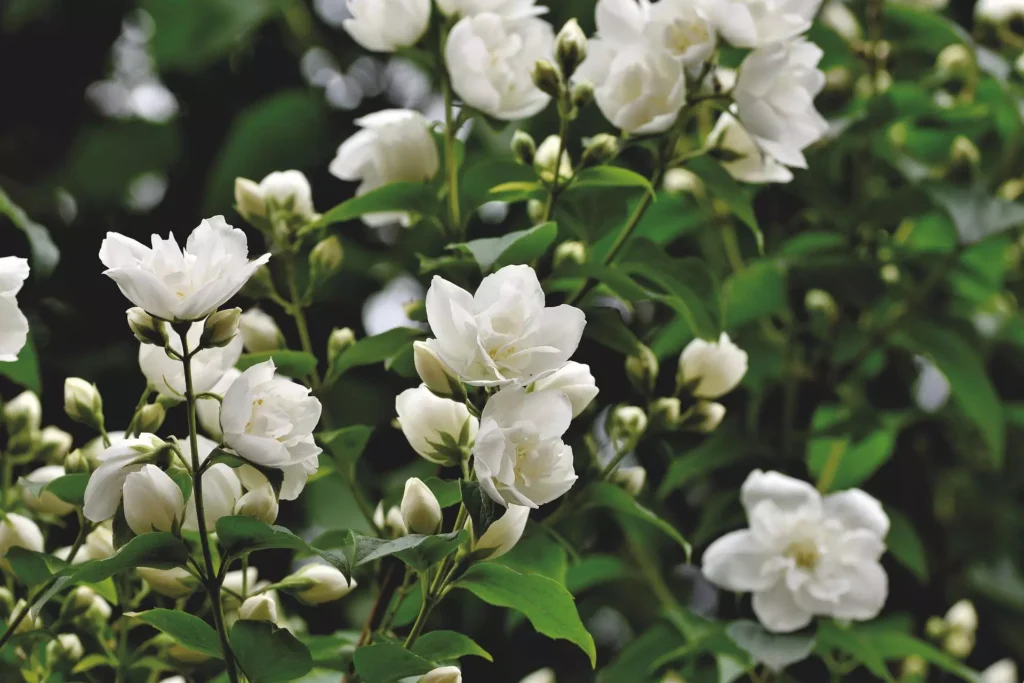
Jasmine Flower History
The species called jasminum grandiflorum was introduced by the Moors through North Africa in southern Spain around the early Middle Ages.
Another account states that the Portuguese explorer Vasco Da Gama might have been the one to introduce the Jasmine flower from India to Europe around the 16th century.
However, this account is often thought as not feasible since in 1659, Sir Thomas Hammer already knew the jasmine grandiflorum as the catalonian Jasmine.
The species of Jasmine that was introduced in Florida from Africa were not cultivated and they are currently classified as an invasive plant.
Jasmine flower meaning and folklore in Tuscany
F C Louden in his Encyclopedia of Gardening relates that the jasmine flower with large double flowers and exquisite scent was first procured by the Grand Duke of Tuscany from Goa in 1699.
He was very possessive and jealous that he wanted to be the sole possessor of this species. He strictly forbade his gardener to even have a single cutting.
The gardener was in love, and on the birthday of his fiancee he gifted her a nosegay (small bouquet given as gift during Medieval times) and among this bouquet was a sprig of this rare jasmine flower.
His fiancee was charmed by the fragrance of the flower and she planted the sprig. Her lover gave her instructions on how to raise cuttings from the plant and she was able to sell them at a high price.
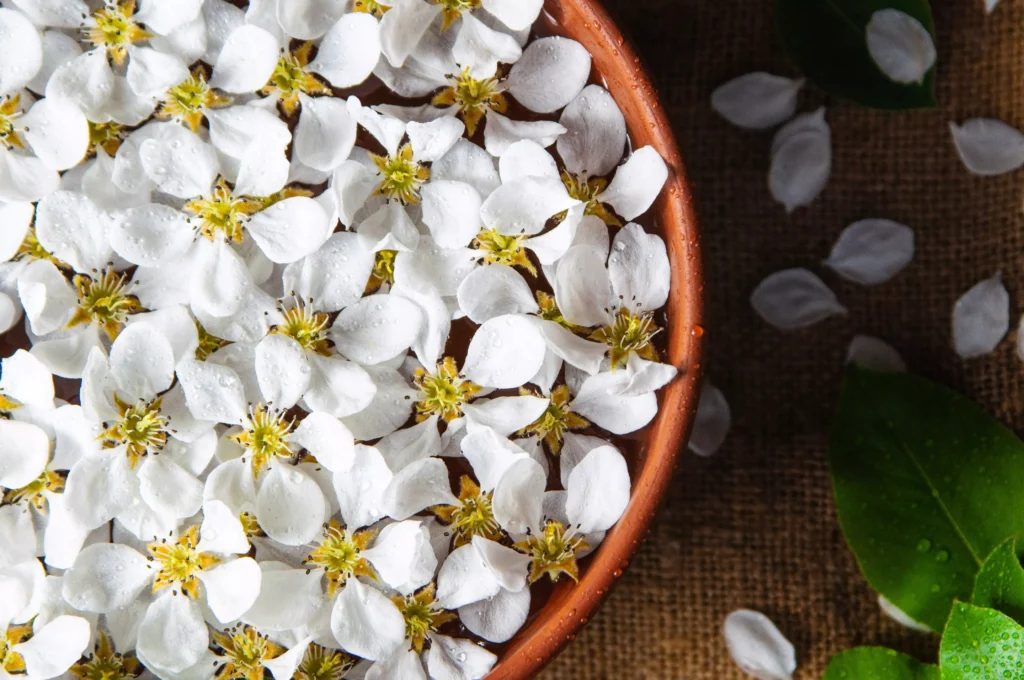
Soon she would save enough money to be able to marry the gardener, the latter was poor and was unable to change this present circumstances.
This story still inspires women in Tuscany. They still wear a wreath of jasmine flower on their wedding day. This has also inspired a saying associated with the jasmine flower meaning “a girl worthy of wearing the jasmine wreath is rich enough to make her husband happy.”
Jasmine flower meaning in Ancient Persia
Iran or Ancient Persia is where the beautiful and fragrant Jasmine originated from.
De Tassy was the translator for the allegories of Aziz Eddin, and the latter points out that the Arabian word “Yasmin” is the original name for jasmine.
Aziz Eddin states the jasmine flower meaning derives from the words “Yas” which translates to despair and “Min” to illusion.
Roman Jasmine Flower Folklore
The Roman used the Jasmine flower as perfume which they imported from the Middle East, Egypt and the Mediterranean regions.
Around the first century, the first Roman Encyclopedist Pliny the Elder stated that the Roman orator Lucius Plotius Gallus in an attempt to hide from his enemies hid in jasmine flowers.
However, the powerful scent of the jasmine of which he was very fond of betrayed him.
Jasmine flower therapeutic properties
Jasmine flower is extensive used in aromatherapy to treat various ailment.
Some of those ailments were:
- Nervous disorders
- Respiratory ailments
- Urinary problems
- Muscular conditions
Several countries such as Tibet, China, Thailand, Nepal, Cambodia, Vietnam, Cuba, Fiji, and several countries in Africa use jasmine to treat:
- snakebite
- smallpox
- depression
- tetanus
- ringworm
- ulcers
- insufficient lactation in nursing women
- intestinal problems
- headache, and heart ailments.
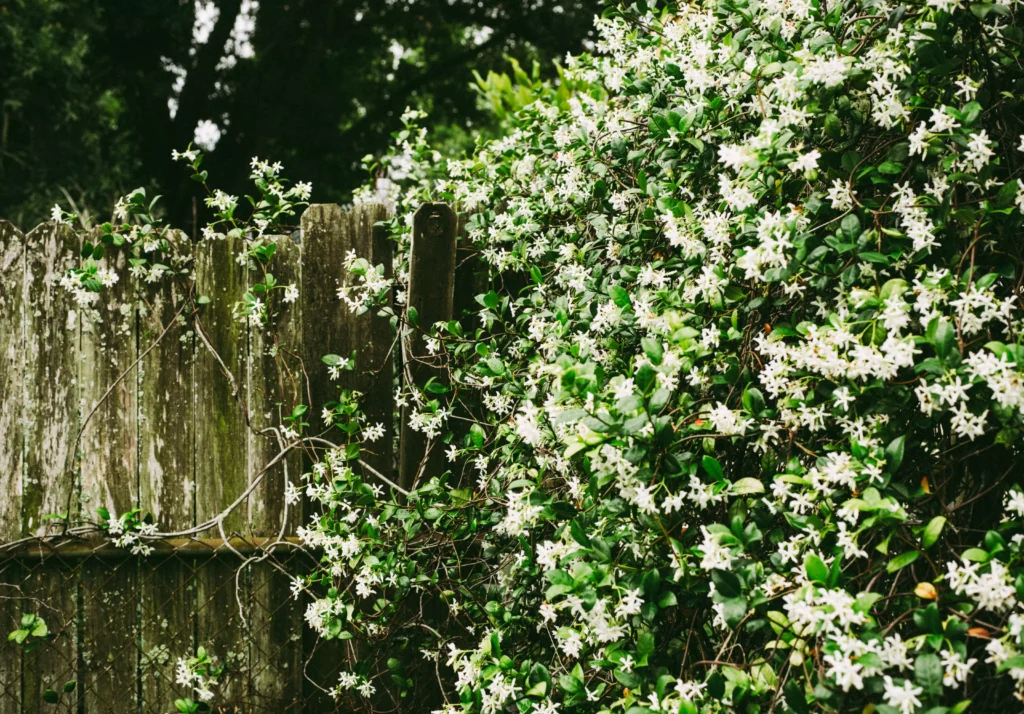
The distinct aroma-therapeutic properties of the Jasmine flower is commonly used to soothe:
- headaches
- insomnia
- grief
- depression
- fear
- worry
The jasmine flower is also used to boost energy. Moreover, it’s calming properties act as a way to find a tranquility and rest. The aroma is so soothing that it can fill the whole house with well-being.
In alchemy the jasmine flower is associated with the moon. It is also thought that jasmine flower would help with prophetic dreams and encourage spiritual love.
Jasmine flower meaning through beliefs and uses
The jasmine flower meaning can be interpreted through the beliefs and uses in different cultures. Let’s explore some of them.
Jasmine Flower and beliefs
In China the Moo-le-hua or jasmine grandiflorum, is used as an adornment for the women’s hair.
Some parts of Africa had superstitious beliefs surrounding the cultivation of the jasmine flower. They believed that the jasmine angulare protected them from lightning. While in Kenya the stems of the jasmine plants were made into ropes.
Southeast Asian countries use jasmine flowers for religious or spiritual purposes, for example in Sri Lanka the cultivation and harvest of the jasmine flower was offered to the Buddha.
In India the jasmine flower are offered to both the gods and the goddesses. The Jasminum Sambac species is often considered as the flower of Vishnu.
Malaysians believed that the fragrance of jasmine attracts spirits that cure diseases.
There is a belief that the jasmine flower is both and antiseptic and an aphrodisiac.
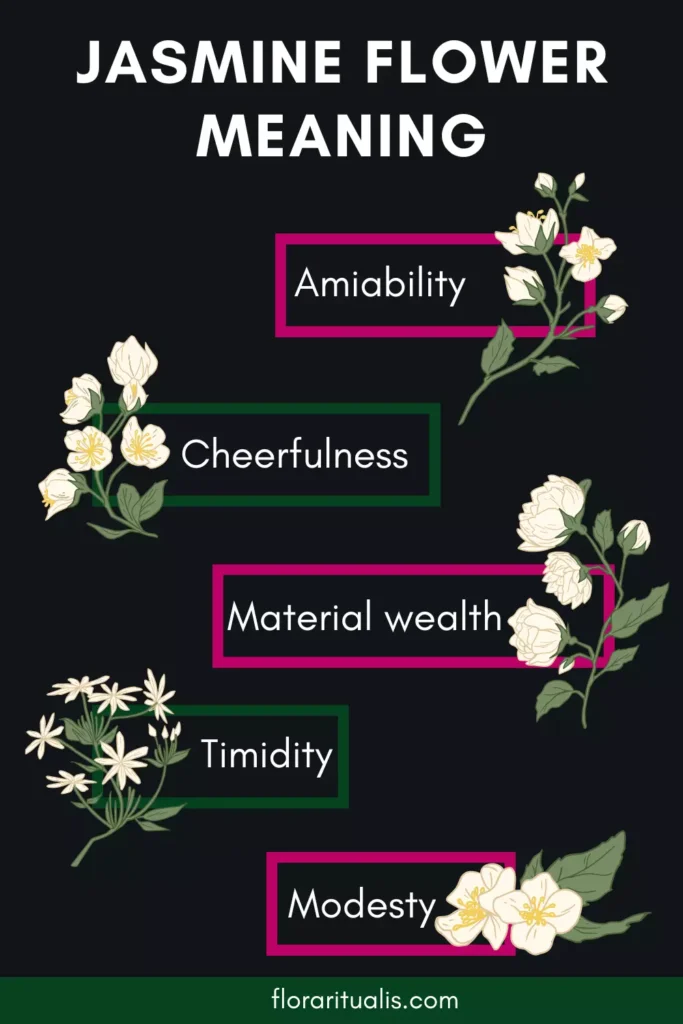
Jasmine Flower and Uses
In countries such as India, Indonesia and Pakistan it common for well-wishers to offer jasmine flower to a bride and groom at their wedding.
During New Year’s day the Chinese give jasmine flowers as gifts.
Indian Folklore states that the god Kama uses jasmine flowers to kindle love between two people.
Jasmine flower has been used to give flavour to various things such alcohol, soft drinks, confectionery, desserts and tobacco.
Since the Song Dynasty around 960 to 1279 CE, Jasmine tea has been a popular beverage in China.
In ancient times, Capnomancy was practiced with jasmine or poppy seeds in fire. It was a divination practice using smoke and the density of the smoke determined if a situation was good omen.
All parts of the jasmine plant are used by medical practitioners to treat various ailments.
The species of the jasmine that give white flowers are particularly cultivated for their fragrance. While the yellow flowers species are mostly cultivated for ornaments.
Jasmine uses in fragrance
Jasminum grandiflorum is the main species in perfume making. Chanel No. 5, Eau Sauvage and Joy are some examples of jasmine featuring in perfumes.
The harvesting process for making one gram of oil or around 25 drops of oil is 8,000 flowers. A worker in the field of jasmine might pick around 5,000 flowers per hour.
Around the 17th century to 1930s, Grasse a province in France became the prime region for the cultivation of jasmine flowers for perfume.
Around the same time several other countries such as Algeria, Italy and Spain rose to contest France’s leadership in jasmine cultivation.
However, the competition didn’t last long as it was judged that the jasmine grown in Grasse remained of superior quality for making perfume.
Types of Jasmine flower and their uses
There are different types of jasmine flower and uses. Let’s explore the jasmine flower meaning through its different varieties.
Jasminum sambac
The Jasminum sambac symbolises purity, love and nobility. In the 1930s, Indonesia adopted it as its national flower. It is called Melati.
Jasminum officinale
Jasmium Officinale in Pakistan is also called Chambeli and it is their national flower.
Jasminum grandiflorum
Both the Jasminum Sambac and the Jasminum Grandiflorum are the main species used to make tea.
China is the world’s largest producer of Jasmine tea. In order to make Jasmine tea, the flowers are layered on tea leaves, this allows the leaves to absorb the flowers’ fragrance.
The best quality of Jasmine tea are pick during the month of May.
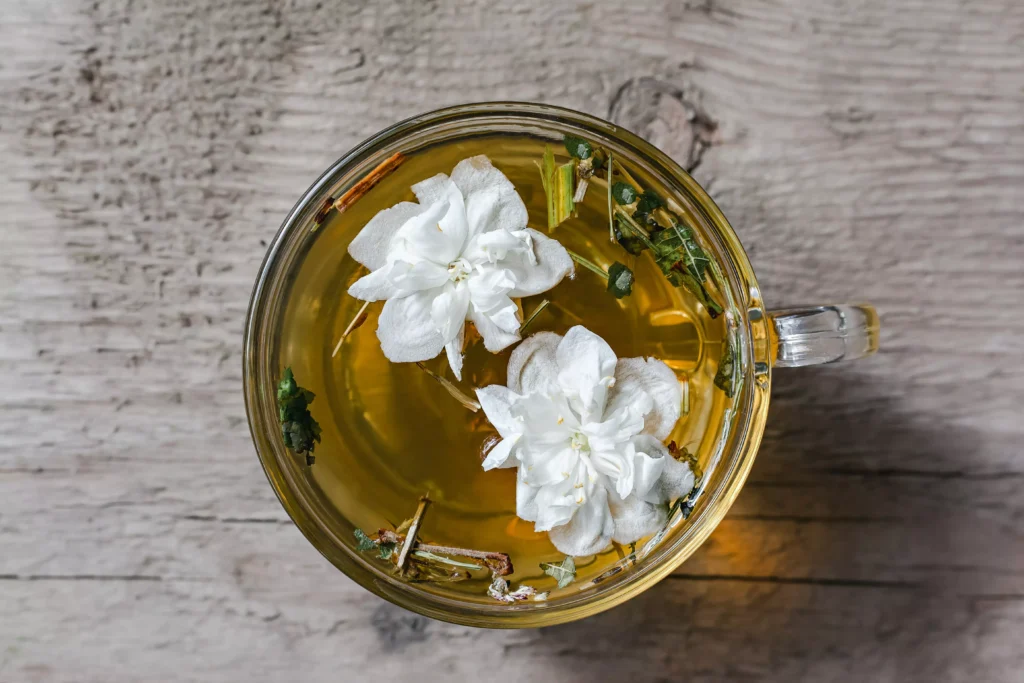
In several regions namely France, Spain, Morocco, Italy, Algeria and Egypt farmers grow this specific species for its essential oil.
While India grows Jasmine for sale to the Middle East. The distinctive fragrance of this flower makes it an important for the perfume industry.
Liked the blog? Then make sure you also read about other plants under the Cancer zodiac sign.
FAQs Jasmine Flower
References
Culpeper, C. N., & Culpeper, N. (2007). Culpeper’s Complete Herbal – Nicholas Culpeper. Book Jungle.
Cumo, C. (Ed.). (2013). Encyclopedia of Cultivated Plants [3 volumes]: From Acacia to Zinnia. ABC-CLIO.
Dietz, S. T. (2022). The complete language of flowers the complete language of flowers: A definitive and illustrated history – pocket edition. Wellfleet Press.
Junius, M. M. (1986). Practical handbook of plant alchemy: How to prepare medicinal essences, tinctures and elixirs. Inner Traditions Bear and Company.
Thiselton Dyer, T. F. (1994). Folklore of Plants. Llanerch Press.
Watts, D., & Watts, D. C. (2007). Dictionary of Plant Lore. Academic Press.
Deena Bsingh, a UK-born, Mauritius-raised content writer, is a dedicated explorer of the ancient world’s hidden treasures. Armed with classical studies knowledge and a decade of spiritual immersion, Deena delves deep into the wellspring of ancient wisdom. Her illuminating writings on flower meanings and culinary history are imbued with the profound insights she has gathered on her journey. Through her Medium articles, she guides readers on transformative journeys that bridge the gap between ancient cultures and contemporary consciousness, offering a rich tapestry of understanding that endures through time.

